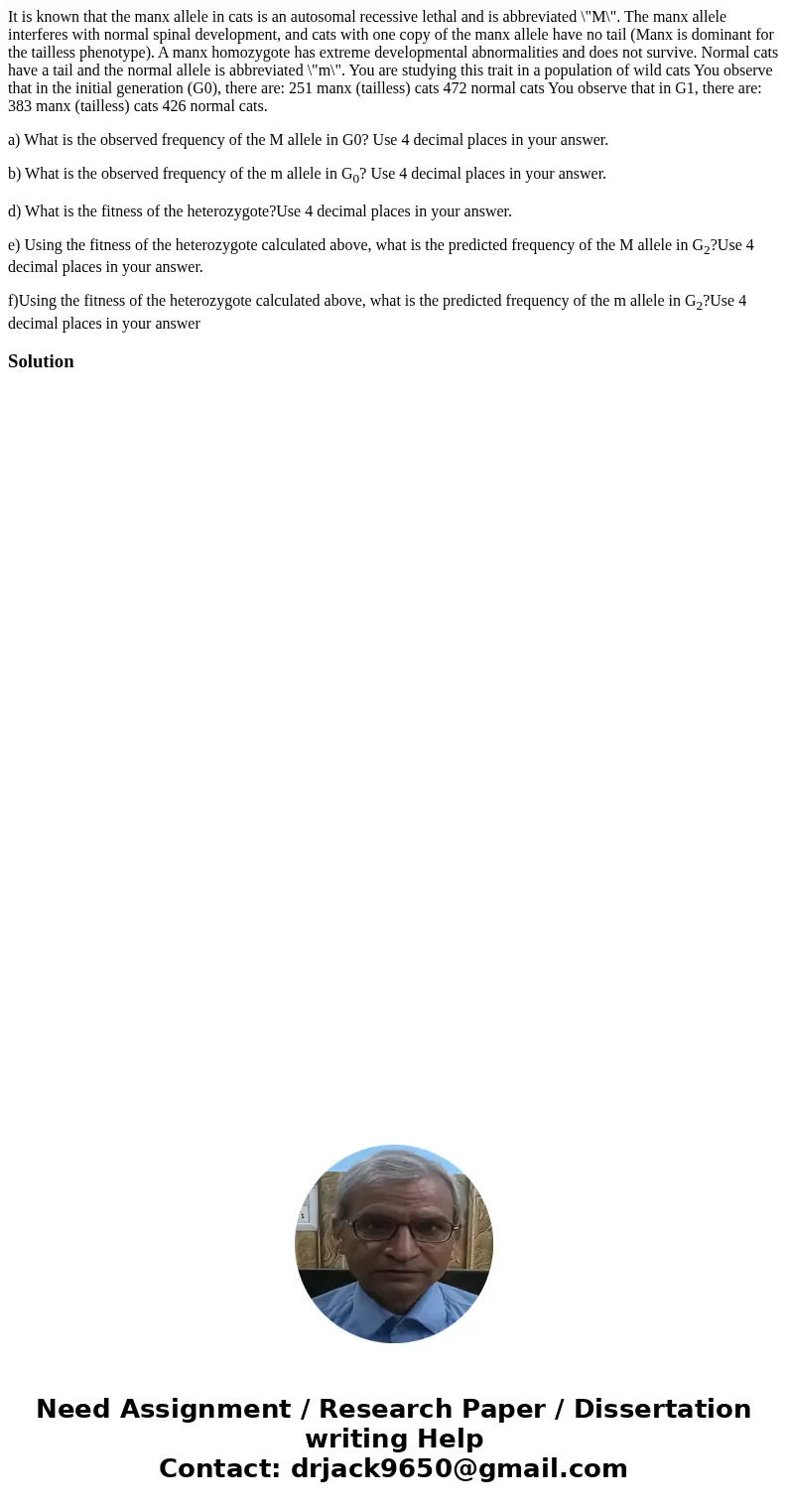It is known that the manx allele in cats is an autosomal rec
It is known that the manx allele in cats is an autosomal recessive lethal and is abbreviated \"M\". The manx allele interferes with normal spinal development, and cats with one copy of the manx allele have no tail (Manx is dominant for the tailless phenotype). A manx homozygote has extreme developmental abnormalities and does not survive. Normal cats have a tail and the normal allele is abbreviated \"m\". You are studying this trait in a population of wild cats You observe that in the initial generation (G0), there are: 251 manx (tailless) cats 472 normal cats You observe that in G1, there are: 383 manx (tailless) cats 426 normal cats.
a) What is the observed frequency of the M allele in G0? Use 4 decimal places in your answer.
b) What is the observed frequency of the m allele in G0? Use 4 decimal places in your answer.
d) What is the fitness of the heterozygote?Use 4 decimal places in your answer.
e) Using the fitness of the heterozygote calculated above, what is the predicted frequency of the M allele in G2?Use 4 decimal places in your answer.
f)Using the fitness of the heterozygote calculated above, what is the predicted frequency of the m allele in G2?Use 4 decimal places in your answer
Solution

 Homework Sourse
Homework Sourse